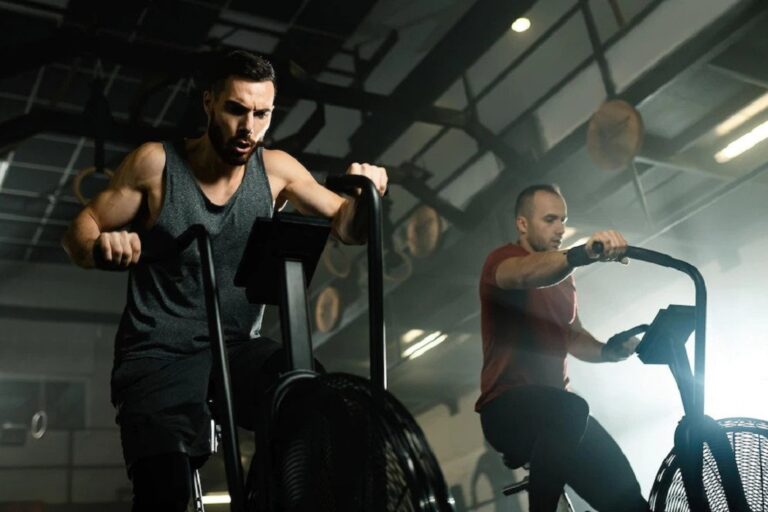
Weight training exercises provide stress to the muscles in our body, which causes them to adapt and get stronger. A strong body allows you to perform different activities and movements that require strength without making you tired.
Muscular strength helps people maintain healthy body weight by burning calories, and it also enhances their body composition. When performing a certain strength training program, people usually find it helpful to train specific muscle groups together.
Working out different muscle groups simultaneously helps prevent overtraining and can also maximize results. Various strength training exercises target different muscle groups together.
In order to improve these results, various muscle groups might be best to work out together while letting other muscle groups rest. Resting certain muscle groups ensures that the body has plenty of time between workouts to recover properly.
Can You Do 3 Muscle Groups a Day?
You should practice one muscle group in a day if you want better growth of your muscles.
Benefits of Combining Muscle Groups In Workouts
Muscles in our body are used for locomotion, but with the help of strength training exercises, they can achieve impressive and complex moves. Exercise programs that involve different muscle groups together can be very beneficial for people looking to stay fit and improve muscle tone and coordination.
It is essential to know the major muscle groups while combining them into different workout sessions. Knowing the right kind of exercise in every muscle group has a powerful impact, and incorporating different muscle group exercises in fitness routines can provide people with multiple benefits.
Such as are:
- It prevents injuries
- Improves posture
- Prevents muscle imbalances
- Refrain from aches and pains
- Builds muscle faster
Different Muscle Groups
There are almost 600 muscles in the body, and targeting major muscles in a workout may impart significant improvements in strength building.
Some specific muscle groups prove to be good to work out together. These are usually the muscle groups that work with each other. A person can create a fitness plan routine and can target different muscle groups each day.
Should I Use Different Weights for Different Muscle Groups?
You should use it according to the capacity of your muscles and not try to carry over weight.
Working on certain muscle groups and moving to another muscle group the next day allows these muscles to rest and train periodically.
What Are the 5 Main Muscle Groups to Workout?
There are typically five muscle groups that people train and exercise, such as:
- The chest
- The shoulders
- The back
- The arms
- The abs
- The legs
Some people divide the above-mentioned muscle groups into different categories:
- The hamstrings
- The glutes
- The quadriceps
- The biceps
- The triceps
- The delts
- The lats
- The traps
What Muscles Should You Pair Together?
1. The Chest Muscles
The chest is a visible part of the upper body that can add weight and force to all strength training exercises. The pectorals are the large chest muscles that significantly provide size to the upper body. These muscles provide support when you hold things and are activated when you reach across your body.
In short, these muscles are activated in almost all everyday movements, mainly at the shoulder joint. Combining these muscles in workouts can effectively strengthen your upper body.
2. The Back Muscles
The back is the most complex muscular structure in our entire body. It is a perfect combination of several muscles working together and complementing each other in various physical activities.
The back muscles rise from the buttocks and stretch to the neck and shoulders. There are generally five muscle groups present in the back. They are:
- Latissimus Dorsi: It is a flat, large muscle on the back that stretches behind the arms and is partly covered by the trapezius on the back near the midline.
The lats facilitate the body’s pulling movements and complement the arms in pursuing various physical activities like pulling something or taking something down from a shelf above your head.
- Rhomboid: These muscles are present in the upper back and are not visible, but they play an essential role in strengthening the scapulae and all the back movements.
- Trapezius: Also known as the traps, these muscles are located between the shoulders and the neck and are significantly important in controlling the scapulae and play an essential role in shrugging and neck movements. These muscles are used to tilt, turn the neck and head, and can shrug shoulders.
- Teres Muscle: Teres’s muscle lies underneath the latissimus dorsi. It works with these muscles as well as the rotator cuffs. Strength training exercises like single-arm lat pullovers and pulldowns target this muscle specifically.
- Erector Spinae: The erector spinae is a group of muscles that straighten and rotate the back.
3. The Arm and Shoulder Muscles
- Biceps: The bicep muscles are located in the front of the upper arm. These muscles help control the motion of the elbow and shoulder joints. The biceps at the elbow is essential in lifting, and at the shoulder, they help move the arms sideways, forward, and upwards.
- Triceps: The triceps are muscles found in the back of the upper arm. These muscles help stabilize the shoulder joint. The triceps are utilized in passing and shooting a basketball and help with finite movements such as drawing, writing, or even push and pull.